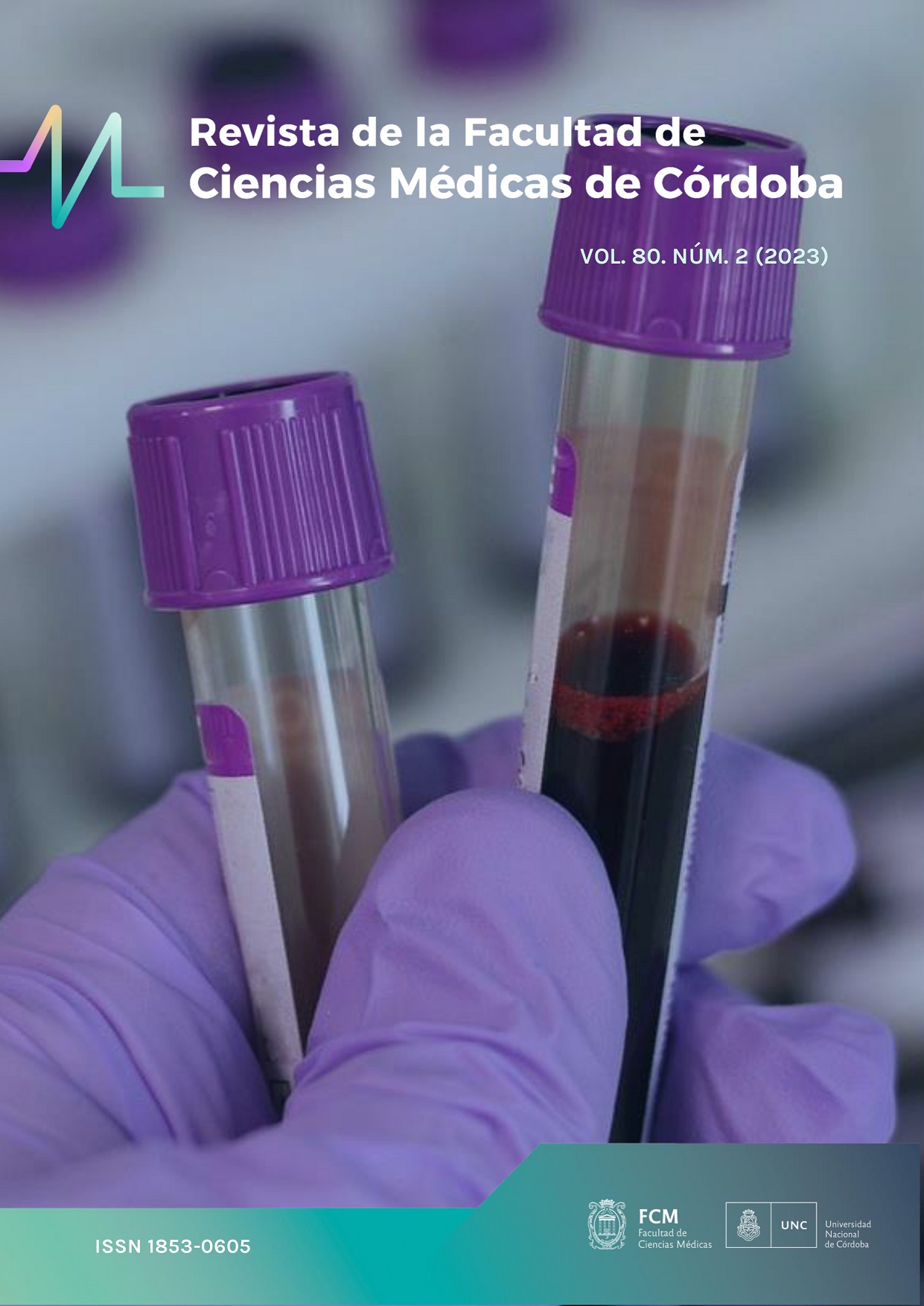Nasal and anal carriers of multidrug-resistant bacteria in the Intensive Care Unit (ICU) of the Villa Mercedes Hospital, San Luis: epidemiological surveillance
Keywords:
carriers, multiresistant, multiresistant bacteria, surveillanceAbstract
The carriage state is the symbiosis between microorganism and host. In the hospital environment, colonizing multidrug-resistant bacteria can cause outbreaks. Our objective was to early detect nasal and anal carriers of multidrug-resistant bacteria in ICU patients and healthcare personnel, to implement control measures and prevent outbreaks.
Nasal (NS) and anal (AS) swabs were performed every three days in 141 patients and 25 healthcare workers. We searched for methicillin-resistant Staphylococcus aureus in NS, ß-lactamase-producing enterobacterales (ESBL-EB) and carbapenemase, and vancomycin-resistant enterococcus (VRE) in AS. Cultures and identification tests were performed by conventional microbiological methods. Resistance mechanisms were studied using the Clinical and Laboratory Standards Institute guidelines. The results were analyzed with the X2 test. The level of significance was p-value < 0.05.
24% of patients presented nasal carriage of methicillin-susceptible Staphylococcus aureus (MSSA) upon admission, increasing to 33% at 72 hours. 19% of patients presented anal carriage of Escherichia coli (ESBL-EC) upon admission, increasing to 23% in the same period. In healthcare personnel, 40% of nasal carriage of MSSA and 4% of anal carriage of ESBL-EC were detected. No VRE was detected in the AS. There were no significant differences between the analyzed percentages of NS and AS of the patients on admission (χ²1, 282 = 2.79, p-value = 0.09) and 72 hours later (χ²1, 282 = 0.67, p-value = 0.41), nor in NS and AS of the patients (χ²1, 166 = 2.78, p-value = 0.09) with those of the healthcare personnel (χ²1, 166 = 3.40, p-value = 0.06). The results could be biased by sample size, false negatives in cultures and lack of long-term follow-up of carriers (death, transfer to other services, medical discharge).
Epidemiological surveillance of nasal and anal carriers of multidrug-resistant bacteria in ICU patients and healthcare personnel is relevant to prevent nosocomial outbreaks. The increase in bacterial carriage 72 hours after admission highlights the importance of continuing surveillance throughout the hospital stay.
Downloads
References
.
Downloads
Published
Issue
Section
License
Copyright (c) 2024 Universidad Nacional de Córdoba

This work is licensed under a Creative Commons Attribution-NonCommercial 4.0 International License.
The generation of derivative works is allowed as long as it is not done for commercial purposes. The original work may not be used for commercial purposes.











